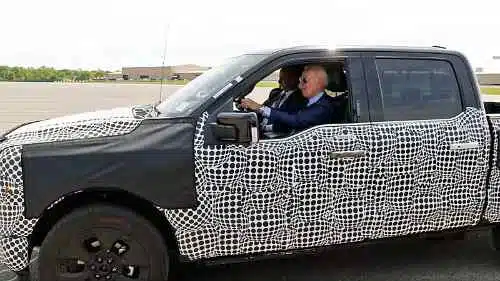The EV is the new Concorde, and it won’t work any better. The Concorde was so noisy they had to travel mostly over oceans, which cost a lot. It was only good across the ocean to Europe.
“In the 1960s and 1970s, the French and British Governments invested heavily in the development of Concorde to provide a supersonic flight for everyman…
“Once British Airways and Air France started using Concorde to provide supersonic flight on routes to the US and Far East, environmental problems quickly emerged. The aircraft’s very loud take-off noise was disturbing, and the sonic boom it generated in supersonic flight was so invasive that it was forced to slow down over land or stick to routes that were mostly over the oceans, a severe setback to its economics…”
The costs were so high to operate the thing that only the rich could afford the tickets. It was a beautiful piece of engineering but would never be a commercial success. It only lasted 27 years, and companies lost a great deal of money.
The author of the article linked here is British, so we’re talking BEVs at times, but it applies to all EVs.
Commercial car makers around the world have subsidized these cars and invested billions of dollars. The early BEV sales were to wealthy people. Car fleets have been the backbone of sales. The tax relief enticed buyers.
However, over the last few months, BEV sales have stalled in many parts of the world, and unsold stock has started piling up at ports and on lots.
These cars will possibly be dumped and scrapped as they become dated and unsold.

“The man in the street has failed to embrace BEVs for the same reason he failed to embrace Concorde nearly 50 years ago: the extra cost – of order £10,000 per vehicle – represents an insurmountable barrier.”…
Insurance costs are higher because some batteries spontaneously combust. It can lead to disaster.
“While oil and gas are widespread commodities, with numerous suppliers around the world, the materials for BEV batteries are mostly controlled by China. Expansion of the EV market will reap rich rewards for Beijing (while simultaneously causing immense environmental damage), and limited supplies combined with rising demand will push up prices still further.”
“Another source of cost inflation is human resources. We will need 40,000 professional engineers for the next 30 years just to expand the electricity supply industry – generation, transmission, and distribution – to cope with the 170 percent increase in demand required by the planned transition to all-electric transport and heating, both industrial and domestic. Staff to repair BEVs already appear to be in short supply.”…
“The energy density is still 40 times worse than petrol. Experts suggest that the best we can hope for is an improvement by a factor of two over the next 50 years.
The big problem this time, over Concorde days, is the government has decided you will buy EVs and like it!


I’ve been saying for a LONG time that if the government spends a lot of money advertising something or subsidizing something, DO NOT BUY IT!
If I am not mistaken the Concord – to go faster than the speed of sound – was using 8 times more fuel than a jumbo jet, but it carried less people, which in part explains the very cost of the plane tickets…and that fuel also meant more pollution. Back in the 90s I had a collection of over 70… Read more »
We the people will decide what’s best for us….
As America’s Gilded Age came to a close, the internal combustion engine(ICE) was born. By 1920, ICE were growing in popularity, replacing the horse. By 1930 many middle class families had a car. By 1950, even lower income Americans had cars. That’s what happened. So, what didn’t happen? There was no government program to wean Americans off horses. Horse feed… Read more »
You hit nail on the head. So, what didn’t happen? There was no government program. Every government program has only caused problems.
The government has done nothing but to subvert innovation by destroying the free market with mandates and government subsidies , or in the form of bailout, same thing; only benefits corporate monopolies and bankers for the short term. It does nothing, only subverts and prohibits the free market and innovation. Time and Time Again, at the Tax Payers Expense. Bailout… Read more »
There are too many issues with EVs to make them successful for people. The biggest is cost to buy one, operate one (cost of EV is $17 per gal vs ICE per in depth study), and insurance is much higher.
To add to a “marvelous” comment: the efficiency of the charging of the EV also depends on the *quality* of the device in the EV that “converts” the electricity to charge the battery. In some EVs it’s as has high as 30-40% loss of electricity during the conversion process.
They’re not practical for all applications,, but for someone that produces their own power’ and for around town and short trips. What I don’t like is that they’re all being made to be dependent on software and computer flat screen crap. Same as all the new combustion engine vehicles, junk!. They do not make any new vehicles today that I… Read more »
Fake science drives bad economic decisions,